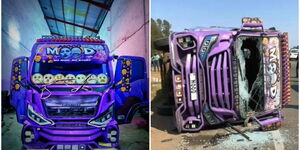Most tour vans have two or three tennis balls fixed on their antennae, either on the front or the rear side.
In most cases, the tennis balls are fixed to keep the antennae steady, prevent them from hitting the car's body while in motion and prevent a shift in resonating frequency.
The fixing of tennis balls on a car's antennae is based on Newton's First Law of Motion, the Law of Inertia.
"If a body is at rest or moving at a constant speed in a straight line, it will remain at rest or keep moving in a straight line at constant speed unless it is acted upon by a force," the law stipulates.
According to an experiment conducted by Curious Crew 360, a UK research firm, when a motorist first sets up the antenna, it assumes a nearly still and balanced posture.
However, it starts moving when a car moves. But when the ball is fixed, it helps resists the change in motion.
"When you first set up the antenna, the antenna is nearly still and balanced. As you begin to spin, the antenna resists that quick change in motion and remains relatively still," Curious Crew 360 stated.
The tennis balls increase the antenna’s mass and make it more stable.
Transmission
According to Firestik, an antennae company, tennis balls are fixed to a transmitting antenna to align the communication frequency.
Justifying their observation, Firestik noted that when a ball is fixed on transmitting antennae, it causes a resonant frequency shift, affecting the standing wave ratio at that frequency.
To prevent the transmitting antennae, which is vital for communication, from shifting its resonant frequency, experts advise motorists to fix the tennis balls and tune the antennae to align with other communication systems.
"If you add it after you've tuned the antenna, you get to tune it again," Firestik antennae company advised.
"Also, you should put a mark of some sort on the antenna so you know exactly where the bottom or top of the tennis ball was when you tuned it because inadvertently, some knothead will start fussing with the tennis ball and by doing so will be changing the standing wave ratio," the company added.
However, to avoid the struggle, modern tour vans have stiff antennas which do not require tennis balls.












